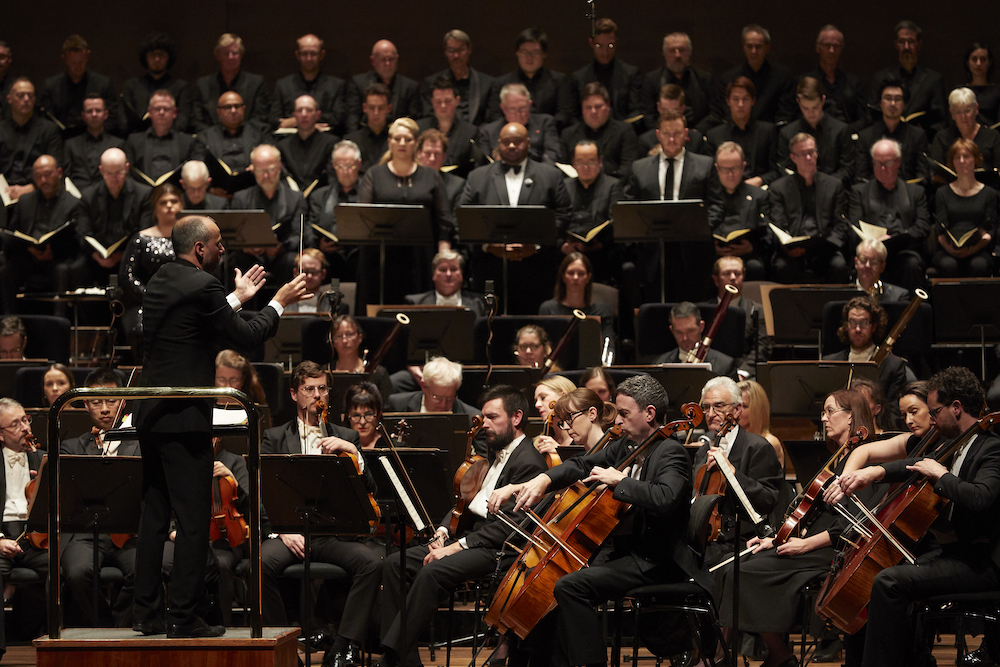That Verdi should compose a setting for the Requiem mass seemed almost incongruous at the time. An atheist, if not anti-religious, the representation of religion in Verdi’s oeuvre was usually negative and political, rather than spiritual and moral. When he found his way to the genre, it was not for a state or religious occasion, but in dedication to the death of a friend, Gioachino Rossini. Verdi’s Requiem finally premiered at the church of San Marco, Milan, in 1874, and critics wondered if it was not too dramatic and theatrical for its religious subject, and some even described is as “an opera in ecclesiastical robes”.
 Lawrence Renes and the Melbourne Symphony Orchestra. Photo © Laura Manariti
Lawrence Renes and the Melbourne Symphony Orchestra. Photo © Laura Manariti
It might have been this sort of setting that one English liturgist had in mind when he wrote, in a manual on the reformation of Catholic church music from 1907, that “Among the different kinds of modern music, that which appears less suitable for accompanying the functions of public worship is the theatrical style, which is in the greatest vogue, especially in Italy … musical compositions of the modern style which are admitted...










Comments
Log in to join the conversation.